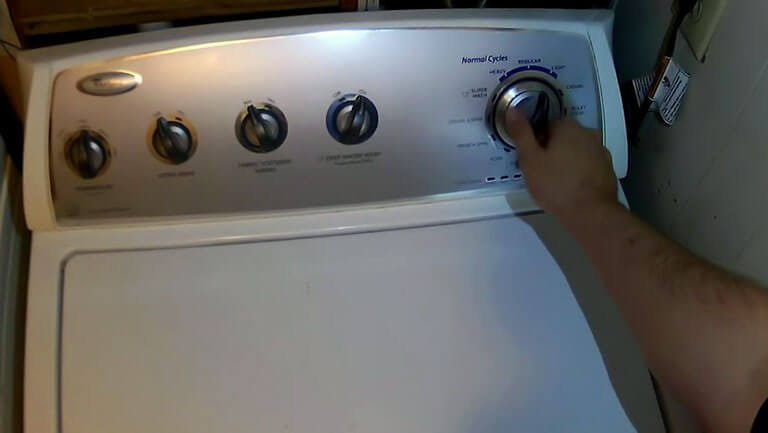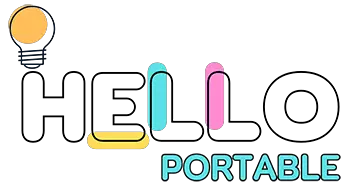A Whirlpool washer not draining can be frustrating. It disrupts your laundry routine.
Washing machines are essential in every household. So, when they malfunction, it’s a big hassle. One common issue is a washer that won’t drain. This can happen for many reasons, from a clogged hose to a faulty pump. Understanding the cause helps fix the problem faster.
In this guide, we will explore the reasons your Whirlpool washer isn’t draining and provide tips to resolve it. Whether you’re a DIY enthusiast or just need some guidance, this information will be handy. Let’s dive into the causes and solutions for a Whirlpool washer not draining.
Common Causes
A Whirlpool washer not draining can be a frustrating issue. Understanding the common causes can help you fix the problem quickly. This guide will help you identify and address the most frequent issues.
Clogged Drain Hose
One common cause is a clogged drain hose. Lint, debris, and small items can block the hose. This blockage prevents water from draining properly. Check the hose for any visible obstructions. Remove any build-up to restore proper drainage.
Faulty Drain Pump
Another cause can be a faulty drain pump. The pump is responsible for pushing water out. If the pump fails, water remains in the drum. Listen for unusual noises. These noises can indicate a problem with the pump. Replacing the pump often solves the issue.
Initial Troubleshooting
If your Whirlpool washer is not draining, you might feel frustrated. But before calling a technician, try some initial troubleshooting steps. These steps can often resolve the issue quickly and save you money. Follow these guidelines to get your washer draining again.
Check Power Supply
First, ensure that your washer is receiving power. Sometimes, the problem is as simple as a loose plug or a tripped circuit breaker. Here’s how to check:
- Ensure the washer is plugged in securely.
- Check the outlet with another device to confirm it’s working.
- Inspect the circuit breaker or fuse box. Reset any tripped breakers or replace blown fuses.
If the power supply is fine, move on to the next step.
Inspect Drain Hose
The drain hose is crucial for proper draining. A blocked or kinked hose can prevent your washer from draining. Follow these steps to inspect the drain hose:
- Turn off and unplug your washer for safety.
- Locate the drain hose at the back of the washer.
- Check for any kinks or bends in the hose.
- If the hose is kinked, straighten it out.
- Disconnect the hose and check for blockages. Use a long brush to clear any debris.
Reattach the hose securely and ensure it is not kinked.
By following these initial troubleshooting steps, you may resolve the draining issue. If the problem persists, further diagnosis or professional help may be needed.
Tools Needed
Experiencing issues with your Whirlpool washer not draining? You may need to gather some essential tools before starting the repair process. Below, we have listed the most important tools you will need. These tools will help you in diagnosing and fixing the drainage problem.
Screwdriver
A screwdriver is a must-have tool in this situation. It helps in removing the washer’s access panel and other screws. Make sure you have both Phillips and flat-head screwdrivers. Different parts of the washer may require different types of screwdrivers.
Here’s a quick guide on using a screwdriver:
- Identify the type of screw.
- Select the correct screwdriver.
- Turn counterclockwise to remove screws.
Pliers
Pliers are equally important when dealing with a Whirlpool washer not draining. They help in gripping and turning objects that are hard to manipulate by hand. You may need needle-nose pliers for tighter spaces and slip-joint pliers for larger objects.
Using pliers effectively:
- Choose the right type of pliers.
- Position the pliers correctly.
- Apply pressure to grip and turn.
Having the right tools makes the repair process much smoother. Make sure you have these basic tools before you start working on your washer.
Cleaning The Drain Hose
Is your Whirlpool washer not draining properly? The drain hose might be the issue. Cleaning the drain hose can often resolve this problem. A clogged hose can stop water from leaving the washer.
Removing The Hose
First, turn off the washer and unplug it. Safety is important. Next, locate the drain hose at the back of the washer. Use pliers to loosen the clamp holding the hose. Carefully remove the hose from the washer. Keep a bucket handy to catch any water that spills out.
Clearing Blockages
Once the hose is off, check for blockages. Shine a flashlight into the hose. Look for any debris or buildup. Use a long, flexible brush to clear any clogs. Rinse the hose with water to ensure it’s clean. Reattach the hose to the washer. Tighten the clamp securely. Plug the washer back in and run a test cycle.
Checking The Drain Pump
Is your Whirlpool washer not draining? The problem might be the drain pump. This component plays a crucial role in removing water from the washer. Understanding how to check the drain pump can help you fix the issue quickly. Read on to learn how to access and test the drain pump.
Accessing The Pump
First, unplug the washer. Safety comes first. Next, locate the drain pump. It’s usually behind the front or back panel. Remove the panel screws to access it. You might need a screwdriver. Remember to keep track of the screws. Once the panel is off, you can see the drain pump.
Testing For Faults
Now, check the drain pump for any visible blockages. Look for debris or lint. Remove anything that might be clogging it. Next, test the pump with a multimeter. Set the multimeter to the resistance setting. Connect the probes to the pump terminals. A reading of zero or infinite means the pump is faulty.
If the pump shows a normal resistance, the issue might be elsewhere. Consider checking the hoses and other parts. But a faulty pump needs replacing. Always use a compatible replacement part. Follow the manufacturer’s instructions for installation.
Replacing The Drain Pump
If your Whirlpool washer is not draining, the drain pump may be the culprit. A faulty drain pump can prevent water from being expelled from the machine. Replacing the drain pump can solve this issue. Below, we will guide you through the steps of removing the old pump and installing a new one.
Removing The Old Pump
First, unplug the washer to ensure safety. Turn off the water supply. Locate the drain pump, usually found at the bottom front of the washer. You may need to remove a panel to access it. Use a screwdriver to remove any screws holding the panel in place. Once the panel is removed, identify the drain pump.
Next, disconnect the hoses connected to the pump. Be prepared for water to spill out. Use a towel to catch any water. Once the hoses are disconnected, unplug the electrical connectors attached to the pump. Remove the screws securing the pump to the washer. Carefully take out the old pump.
Installing The New Pump
Begin by placing the new drain pump in the same position as the old one. Secure the pump with screws. Reconnect the electrical connectors to the new pump. Ensure they are firmly attached. Attach the hoses to the new pump. Tighten the hose clamps to prevent leaks.
Once everything is connected, replace the panel and secure it with screws. Turn on the water supply. Plug the washer back in. Test the washer by running a short cycle. Check for any leaks or unusual noises.
Replacing the drain pump can restore your washer’s draining function. Follow these steps to ensure a successful replacement.
Whirlpool Washer Not Draining? [Here is the Preventive Maintenance]

Preventive maintenance is essential for keeping your Whirlpool washer in top condition. By following a few simple steps, you can prevent common issues like drainage problems. Focus on regular cleaning and avoiding foreign objects to keep your washer running smoothly.
Regular Cleaning
Clean the washer’s drum regularly. This prevents soap scum and lint buildup. Use a mild detergent and warm water. Rinse thoroughly. Dry the drum with a soft cloth. This simple routine keeps your washer clean and efficient.
Don’t forget the detergent drawer. Remove it and clean it with warm water. This prevents mold and residue buildup. A clean detergent drawer ensures proper detergent flow. Your clothes will come out cleaner.
Check the washer’s filter. Lint and debris can clog it. Clean it at least once a month. Remove the filter and rinse it under running water. This keeps the drainage system clear.
Avoiding Foreign Objects
Check pockets before washing clothes. Coins, paper clips, and other small items can damage the washer. These objects can block the drain pump. This causes drainage issues.
Use a laundry bag for small items. Socks, underwear, and other small garments can get stuck in the washer. A laundry bag keeps them contained. This prevents blockages and ensures a smooth washing cycle.
Inspect clothes for loose buttons or embellishments. These can break off during washing. They can clog the drain or damage the drum. Secure loose items before washing.
When To Call A Professional
Experiencing a Whirlpool washer that won’t drain can be frustrating. Sometimes, the issue might be simple to fix. But other times, you might need to call a professional. Knowing when to call for expert help can save you time and money. Below are some scenarios when it’s best to seek professional assistance.
Persistent Issues
If your Whirlpool washer consistently fails to drain, even after multiple troubleshooting attempts, it’s time to call a professional. Persistent issues often indicate deeper problems that require specialized knowledge. Ignoring these signs can lead to more serious damage, increasing repair costs.
- Washer doesn’t drain after cleaning the filter
- Repeated error codes related to drainage
- Water remains in the drum after each cycle
Complex Repairs
Some repairs are too complex for DIY fixes. For example, issues with the washer’s pump or motor are best left to professionals. These components are intricate and require specialized tools for repair.
| Issue | Description | Professional Needed |
|---|---|---|
| Faulty Pump | The pump may need replacing or repair | Yes |
| Electrical Problems | Issues with wiring or control board | Yes |
| Motor Failures | Motor not functioning correctly | Yes |
Attempting to fix these issues without proper skills can be dangerous. It can also void your warranty. Calling a professional ensures the job gets done safely and correctly.
Frequently Asked Questions
Why Is My Whirlpool Washer Not Draining?
A clogged drain hose or pump can cause the washer not to drain.
How Do I Unclog My Whirlpool Washer Drain Hose?
Disconnect the hose and flush it with water to remove debris.
What Causes A Whirlpool Washer Drain Pump To Fail?
Debris buildup or mechanical failure can cause the drain pump to fail.
Can I Manually Drain My Whirlpool Washer?
Yes, by using a bucket and lowering the drain hose to the floor.
How Often Should I Clean My Washer’s Drain Filter?
Clean the drain filter every three months to avoid clogs.
Conclusion
A Whirlpool washer not draining can be frustrating. Simple fixes often resolve the issue. Check the drain hose for clogs. Clean the pump filter regularly. Ensure the lid switch works properly. These steps can save you time and money. If the problem persists, consider professional help.
Regular maintenance prevents future issues. Keep your washer running smoothly. Happy washing!
